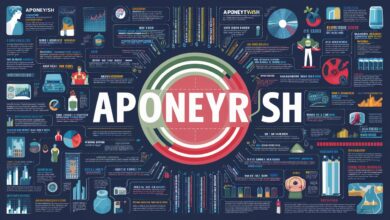Dihward: The Complete Guide to Understanding, Implementing, and Mastering Its Power

In today’s fast-paced digital landscape, Dihward has emerged as a transformative concept driving innovation, growth, and competitive advantage across industries. Whether you are a business owner, marketer, or technology enthusiast, understanding what Dihward is, how it works, and how to implement it effectively can significantly enhance your strategic decision-making. In this detailed guide, we explore the meaning, benefits, applications, and best practices of Dihward, along with expert insights to help you stay ahead in the digital race.
What Is Dihward?
Dihward represents a dynamic framework or methodology designed to integrate digital intelligence, workflow automation, and advanced resource development into business ecosystems. It acts as a bridge between digital transformation and operational excellence, enabling organizations to streamline processes, optimize resource utilization, and achieve measurable outcomes.
Unlike traditional systems that rely on fragmented data and manual processes, Dihward focuses on holistic integration, combining AI-driven analytics, smart data mapping, and adaptive learning technologies. This approach ensures agility, scalability, and precision in all aspects of operations, from planning to execution.
The Core Principles of Dihward
To harness the true potential of Dihward, it’s essential to understand its foundational pillars:
1. Digital Intelligence
At the heart of Dihward lies digital intelligence, which encompasses AI-powered insights, predictive modeling, and data-driven decision-making. Businesses can identify opportunities, detect inefficiencies, and anticipate future trends with unparalleled accuracy.
2. Holistic Integration
Dihward thrives on seamless system integration, bringing together multiple platforms, tools, and data sources into a centralized digital ecosystem. This eliminates data silos and fosters real-time collaboration across departments.
3. Workflow Automation
With smart automation, Dihward reduces manual interventions and repetitive tasks. From automated reporting to intelligent resource allocation, it empowers teams to focus on strategic initiatives rather than routine operations.
4. Adaptive Resource Development
Another key component of Dihward is its focus on adaptive learning and continuous development. By integrating machine learning algorithms, it continuously evolves based on changing market dynamics and user feedback.
Why Dihward Matters in the Modern Digital Era
In an environment dominated by rapid technological evolution, businesses must adapt or risk becoming obsolete. Dihward offers a competitive edge by combining the best of technology, analytics, and innovation into one cohesive framework. Its significance can be seen in several areas:
-
Enhanced Decision-Making: With actionable insights from data, businesses can make informed strategic choices.
-
Increased Efficiency: Automation minimizes human error, boosts productivity, and ensures consistent output.
-
Cost Optimization: By streamlining processes and reducing waste, Dihward helps businesses operate more profitably.
-
Customer Satisfaction: A data-centric approach enables personalized experiences, improving loyalty and retention.
-
Scalability and Flexibility: Dihward grows with your organization, adapting to new goals, technologies, and markets.
Key Benefits of Implementing Dihward
1. Data-Driven Transformation
By leveraging big data analytics, Dihward transforms raw data into valuable insights, supporting smarter business strategies.
2. Real-Time Operational Control
With real-time monitoring tools, Dihward ensures organizations maintain continuous visibility into key performance metrics.
3. Sustainable Growth
Its adaptive algorithms allow continuous improvement, ensuring sustainable growth even amid changing market conditions.
4. Competitive Differentiation
Companies adopting Dihward stand out through innovation, speed, and efficiency, positioning themselves as industry leaders.

Applications of Dihward Across Industries
Dihward’s versatility makes it suitable for multiple industries, each reaping unique benefits:
In Manufacturing
Dihward enhances supply chain optimization, predictive maintenance, and quality control through real-time analytics.
In Finance
Financial institutions use Dihward for fraud detection, risk analysis, and customer segmentation, enabling better compliance and trust.
In Healthcare
From patient data management to AI-powered diagnostics, Dihward ensures precision and efficiency in healthcare delivery.
In Retail
Retailers leverage Dihward for inventory forecasting, customer behavior analysis, and personalized marketing campaigns.
In Education
Educational institutions employ Dihward to create adaptive learning environments, improving student engagement and outcomes.
Steps to Successfully Implement Dihward
1. Define Clear Objectives
Start with a strategic vision that aligns Dihward with your organizational goals. Identify key areas where it can deliver the most value.
2. Assess Current Capabilities
Conduct a digital maturity assessment to understand existing infrastructure, data quality, and technological readiness.
3. Develop an Integration Plan
Plan for seamless integration of Dihward with your current tools, workflows, and data sources.
4. Prioritize Data Governance
Ensure data accuracy, privacy, and compliance by implementing strong governance frameworks.
5. Train and Empower Teams
Equip teams with comprehensive training to adapt to the Dihward ecosystem and encourage continuous learning.
6. Monitor and Optimize
Regularly review performance metrics, gather feedback, and fine-tune processes to maximize efficiency and impact.
Challenges and Solutions in Adopting Dihward
Despite its potential, adopting Dihward can come with challenges like integration complexity, resistance to change, or data security concerns. However, these can be addressed by:
-
Building cross-functional teams for collaborative implementation
-
Investing in cybersecurity frameworks and encryption protocols
-
Adopting a phased deployment strategy to reduce disruption
-
Ensuring executive sponsorship and stakeholder alignment
The Future of Dihward
The future of Dihward is closely tied to advancements in AI, IoT, and cloud computing. As organizations move toward hyper-automation and intelligent ecosystems, Dihward will play a central role in enabling autonomous operations, smart decision-making, and continuous innovation. Those who embrace it today will be the pioneers of tomorrow’s digital revolution.
Conclusion
Dihward is more than just a digital solution—it’s a strategic enabler of innovation, intelligence, and integration. By adopting this powerful framework, organizations can unlock unprecedented growth, resilience, and competitiveness. The time to act is now—embrace Dihward, and transform the way you work, innovate, and succeed.
FAQs About Dihward
Q1: What makes Dihward different from other digital transformation frameworks?
Dihward focuses on holistic integration and adaptive intelligence, offering a unified approach to data, automation, and resource development.
Q2: Can small businesses benefit from Dihward?
Absolutely. Dihward’s scalable structure makes it ideal for both small and large enterprises seeking efficiency and growth.
Q3: Is Dihward customizable?
Yes, it is highly customizable based on industry, size, and organizational goals, ensuring maximum alignment and impact.
Q4: How long does Dihward implementation take?
The timeframe depends on organizational complexity, but a phased approach ensures steady progress and measurable ROI.
Q5: Does Dihward require specialized skills?
While technical understanding helps, Dihward is designed for ease of adoption through training and guided implementation.



